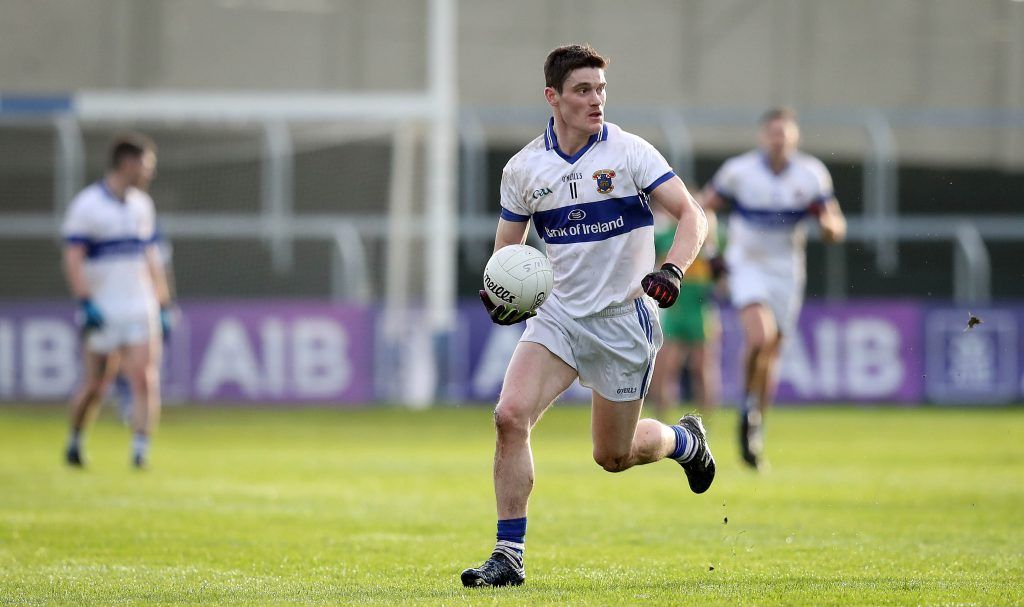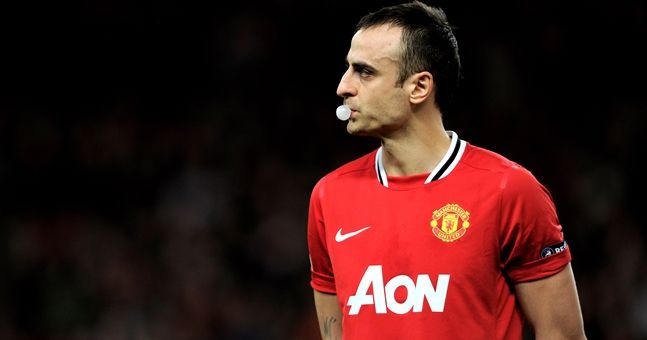After the televising of the St. Vincent’s versus St Jude’s Dublin Senior Football Championship semi-final, opinions about Diarmuid Connolly, from people who wouldn’t typically see such a game, were in full flow.
I heard a good clatter of them in the ensuing days – “he didn’t look like he was trying”; “he didn’t look like he cared”; “it looks like there’s too much mileage on the clock”.
I’m not unused to hearing such opinions, and to some extent, I can see why these perceptions would have existed. He hadn’t been on a huge amount of ball, and at least until the red cards, he hadn’t done any particular damage.
That’s added to the fact that his facial expression never looks particularly like he’s enjoying himself.
On many levels, I see parallels with former Spurs and Man United striker, Dimitar Berbatov. People said he was lazy. They said that he looked like he didn’t care.
The fact of the matter, however, was that he was one of the highest scoring strikers in the Premiership, and GPS figures showed that he matched other strikers both in terms of kilometres covered per game and top speed sprints made.
While the t-v stats don’t give you the key significant finding relating to work ethic – how many top speed sprints are made when the other team has the ball, my own observations suggested that he matched the average, at least.
Perhaps, if Berbatov had worn a top hat and carried a false selfie-styled smile around the field, he would have been judged more favourably by supporters, more accurately in line with what statistical read-outs had proven beyond reasonable doubt.
Equally, I wonder if Connolly looked a tad happier on the field, would the myth that he doesn’t track back when the other team have the ball, exist – and my very close observations tell me that it is indeed a complete myth.
Without access to his GPS figures, that element of his game can only be left to observation. What isn’t left to observation, but is illustrated in stark statistical terms, is his impact on games – judged by ball contacts per game and the outcome of these contacts.
To those unfamiliar with these figures, Connolly’s performance against Jude’s may have appeared lacklustre, and it was indeed below par by his club standards. They weren’t, however, as significantly under par as you might imagine.
In terms of pure statistics, we’ll look at his opening 37 minutes, before Mark Sweeney was sent off, and it was fifteen versus fifteen.
Connolly had only been on the ball eight times, he hadn’t scored, he hadn’t had a major contribution in a score and he had only broken the line once, having received the ball from a kick-out on his own “45”.
Do full forwards, who don’t care, come short for kick-outs on their own “45”, under the watch of tight man-markers?
The astounding thing about Connolly’s raw possession figures, however, is that in terms of the amount of ball that Connolly gets on per game, they were almost much bang on average. In fact, relative to sixty minutes, they were slightly higher
Looking at big games which Vincent’s have won in the last thirteen months, Connolly has averaged a mere eleven possessions a game from play! Even at county level, it was fourteen in each of the 2016 finals against Mayo, only marginally higher on a minute per minute ratio.
To put that into context, the average possessions from players in the half forward line at club level is in and around twenty possessions per game.
There is, of course, one key element to bear in mind. Connolly will inevitably be under the watch of the opposition’s best man-marker who will typically be under explicit instructions to mark him tightly.
Typically, however, Connolly will sneak into full forward for a bit, and frequently, he’ll score a goal when he does. Last year, he did it against Na Fianna in the second round, and against Lucan in the quarters (fouled for a penalty), and again in this year’s second round against Na Fianna.
When you play at full forward, the lines are very fine between being the match winner and looking inconspicuous or potentially disinterested.
Up until the first red card against Jude’s, as opposed to Connolly’s normal modus operandi of playing at centre forward and creeping into full forward occasionally, he did it the other way around, making the odd cameo in the half forward line.
The only difference between his role at full forward against Jude’s and previous cameos there, was that when a tempting ball was landed on his head inside the box, it was slightly less than inch-perfect, and he was being marked by Paul Copeland, possibly the best club full back in Dublin on this year’s form.
Had Connolly grasped this ball, as he would against most defenders, and rattled the net, it would have been business as usual. These fine lines between success and failure, at full forward, from eight possessions and one high ball, are too small to take seriously as an indicator of a player’s ability.
What is a serious indicator of his ability is the fact that from 33 possessions against three top club sides last year, Ballymun in the semi-final, Castleknock in the final and Rhode in the Leinster final, Connolly scored 1-6. The four against Ballymun were simply breath-taking, as were four defence splitting passes which created three points, almost on a plate, against Castleknock.
In fact, if we calculate scores, being fouled for scored frees and making the key pass for scores, from 35 possessions (including two frees against Castleknock) an astounding 1-12 came straight off these 35 possessions
At a total of eighteen line-breaks/scores from 35 possessions, his possession to line-break ratio from these games is the only player I’ve ever analysed who hits over a fifty percent ratio, or even comes close for that matter. And that’s against three top club sides!
Alas, from the free after Judes’ first red card in the semis, Connolly took the ball at midfield and broke the line, carrying it to the “21” before picking it back up again and jinking inside to bring the most methodical of zonal defences to its knees, and point.
Before the red card had taken its toll (Jude’s had twelve men behind the ball when the free was taken), Connolly had had ten possessions with three line-breaks and three “Mildly Positive” plays, and only one turnover – not so far below par by his usual standards.
Indeed, typically, if the need arises, Connolly makes almost twice as many of his line breaks in the second half as the first!
Come bank holiday Monday, don’t be surprised if Connolly isn’t on ball after ball. Be surprised if he doesn’t tear the Ballymun Kickhams defence apart with the small amount he gets on. With question marks over John Small’s fitness, it’s a double worry for Ballymun.
If you’re a neutral, sit back, grab a cuppa and relax, and wait for the show. Don’t expect high amount of possessions from Connolly, but expect magic when he is on the ball.
It’s rarely he disappoints.


















































